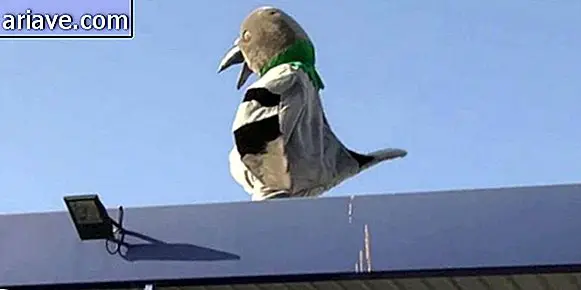Proven: Refrigerators Don't Protect People From Atomic Explosions
On the IMDB, the film Indiana Jones and the Kingdom of the Crystal Skull received 6.4 as a rating from readers and site critics. But in the real world, people seem to have enjoyed the hero's last adventure even less.
A scene that has not been well digested by fans to date is one where he hides inside a refrigerator to escape an atomic explosion. If you haven't watched it yet, check out the video above. We are sure that after seeing it, you will be wondering if you can really get away with it that way.
To answer this question, Shechner, a biophysicist and biochemist at Overthinking It, analyzed the scene from a scientific point of view, collecting, for example, data on the power of the bomb detonated at the time. Based on the location and date of the experiment faced by "Indy, " the author of the text estimates that the bomb's detonation power was around 10 to 44 kilotonnes, equivalent to the instantaneous burst of up to 40, 000 tons of TNT.
After that, Shechner estimated the weight of the Indiana Jones refrigerator, and came to the conclusion that, when fired, the adventurer in the theaters would have suffered a force of 2, 605, 760 Newtons, the equivalent of having to endure about 3, 253 people sitting simultaneously on each other. him. Also, to be flying that way, the refrigerator and archaeologist would have to be positioned very close to the bomb's detonation point, which would completely destroy our hero.
Likely Causes of Death

And even if this information is not taken into account, Indiana Jones could still die in many other ways. Among them are
- the minimum pressure needed to lift the Indiana Jones refrigerator off the floor would be enough to destroy them. Just notice, for example, that the Soviets in the car are disintegrated while the refrigerator remains intact;
- the acceleration would be lethal. 2, 605, 760 Newtons acting on a 170kg body equals a g-force of approximately 1, 560G. To date, the maximum supported by a human in the laboratory has been 42G. Such a great acceleration has not been tested, but it is likely that it would at least break all of Indy's ribs and still cause several thromboses to appear in her circulatory system;
- The calculations are made for a single sturdy body object, but the human being is quite malleable. Therefore, the acceleration and impact of the refrigerator could break the hero's neck;
- With the heat of the outside air, the lead's coating of the refrigerator would melt, further compromising the protection offered to the archaeologist by the refrigerator;
- the air would be so hot that the mere breath of Indiana Jones could cause irreparable damage to her lungs and throat;
- With the damage to the refrigerator's lining, Jones would also feel the effects of radiation, and even if he escaped a lethal charge, the adventurer would suffer very unpleasant side effects such as bone damage, central nervous system, and death from gastrointestinal complications.
Apparently Spielberg will have to review his science base before firing another character in the air.











